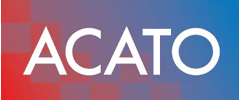
Key Steps to Plan Your ISO 27001 Internal Audit
The planning phase of an ISO 27001 internal audit is crucial for any organization striving to achieve and maintain high standards in information security management. Effective audit planning provides a structured framework to identify risks and ensures the organization’s policies, procedures, and controls are aligned with internationally recognized standards. It is also vital for demonstrating compliance, reducing vulnerabilities, and supporting a continual improvement process that strengthens the organization against cyber threats. In a rapidly evolving digital landscape, the role of a consultant with expertise in the iso 27001 certification process becomes indispensable. These professionals bring valuable knowledge related to risk management, evidence collection, and governance, ensuring that the internal audit process is both comprehensive and efficient.
Moreover, a well-conceived internal audit plan facilitates effective communication between departments, fosters transparency in evaluating compliance, and streamlines the surveillance of management review practices. This proactive approach aids in identifying conflicts of interest, ensuring appropriate access control, and verifying the implementation of penetration testing protocols. The planning process underpins the entire audit cycle and secures critical assets, reinforcing the organization’s cyber resilience. With defined objectives, precise boundaries, and a rigorous audit schedule, internal auditors can tackle complex systems with confidence.
The following sections detail every step required—from establishing objectives to implementing continuous improvement practices—thereby guiding IT directors, business leaders, and internal auditors to execute a robust internal audit that meets ISO 27001 standards successfully. This comprehensive guide also examines scientific studies supporting risk evaluation and automation in audits, outlines key performance metrics, and provides actionable insights for a seamless audit process.
Establish Audit Objectives and Scope

Establishing clear audit objectives and scope is the foundational step in planning an ISO 27001 internal audit. The primary objective here is to determine the precise boundaries within which the audit will operate. This involves not only pinpointing the physical and logical assets to be examined but also identifying the key processes that directly impact information security management. The internal audit service must cover areas such as access control, penetration testing outcomes, conflict of interest evaluations, and governance protocol adherence. A systematic approach to defining objectives helps ensure that critical elements of the organization’s security framework are included in the audit, thereby enhancing the risk assessment process. Detailed documentation of the audit scope not only provides clarity for the audit team but also sets measurable criteria for evaluating audit performance.
Define the Boundaries of the Internal Audit
This step involves specifying which parts of the organization, including departments, systems, assets, and data flows, will be reviewed during the audit. For example, an organization might choose to focus on critical processes within their IT infrastructure, such as data storage security, communication protocols, and system monitoring. Key assets like servers, network appliances, and end-user devices must be explicitly listed to avoid any ambiguity. Likewise, the boundaries should incorporate interfaces with external partners and any cloud-based services that utilize the organization’s data. The detailed boundary setting aids in minimizing potential gaps, ensuring that neither internal nor external vulnerabilities go unaddressed. It further establishes a link between individual risk assessments and overall organizational risk management strategies, making it easier for auditors to track improvements and areas requiring attention.
Identify Key Assets and Processes to Review
Once the boundaries are established, the next logical step is to identify the key assets and processes crucial for maintaining the ISMS. Assets such as information databases, proprietary software, and hardware systems form the backbone of the organization’s operational integrity. Meanwhile, processes including change management, incident response, and regular system maintenance are pivotal for ensuring that security controls remain effective over time. A thorough analysis of these components allows auditors to prioritize high-risk areas and pinpoint where evidence is required. By aligning these assets and processes with the certification standards, auditors can provide a precise gap analysis and facilitate targeted improvements. This meticulous selection process supports risk-based sampling methods that are essential for demonstrating proper audit evidence and ensuring a continual improvement process.
Set Clear Criteria for Measuring Audit Performance
Clear performance criteria must be established before initiating the audit. These criteria serve as benchmarks for assessing the quality of the internal audit, ensuring compliance with both ISO 27001 standards and the organization’s predefined policies. Metrics such as the frequency of audit findings, the percentage of compliance across different departments, and the time taken to resolve non-conformities should be defined in advance. Additionally, these criteria must support surveillance and management review processes by incorporating both qualitative and quantitative measures. A risk-oriented evaluation framework can be beneficial here. By comparing pre-audit risk levels with post-audit improvements, organizations can validate the effectiveness of their internal audit processes. Establishing robust measurement criteria further enhances transparency, enabling leadership and external consultants to gauge the overall impact on the organization’s risk management and standardization efforts.
Key Takeaways: – Precise objectives and scope are critical for a successful internal audit. – Defining boundaries and key assets ensures a comprehensive review. – Establishing clear performance criteria supports effective evidence collection and continual improvement.
Prepare Audit Schedule and Resources

Preparing a detailed audit schedule and allocating the necessary resources are critical steps to ensure that the ISO 27001 internal audit process runs efficiently. This phase involves strategic planning to identify and mobilize experienced team members, create a realistic timeline, and gather all technical tools and documentation required. A well-structured audit schedule helps prevent resource conflicts and ensures that every phase of the audit—from data collection to final reporting—is completed within a set timeframe. Moreover, it reduces the chance of oversight by harmonizing activities with business operations, thereby minimizing disruptions. The process also underscores the importance of consulting with internal auditors and information security managers to leverage their institutional knowledge. By integrating risk management, sampling techniques, and conflict of interest evaluations into the schedule, organizations ensure that every angle of the security process is examined, further solidifying their commitment to ISO 27001 certification.
Allocate Experienced Team Members for the Audit
An internal audit’s success relies on the competencies of the audit team. It is essential to identify auditors with a combination of technical expertise and a strong understanding of regulatory requirements. The team should include experts in areas such as information security management, IT systems, and risk assessment. This personnel must be familiar with ISO 27001 standards, audit evidence collection, and methodologies for gap analysis. In many cases, organizations benefit from engaging external consultants to provide a fresh perspective on internal processes. Using a blend of internal and external resources not only bolsters credibility but also contributes to the standardization of the audit process. Each team member’s role is clearly defined to ensure that tasks are distributed effectively, whether it involves reviewing access control systems, evaluating risk management policies, or testing penetration and vulnerability assessments. This level of specialization ensures that all facets of the audit are conducted with meticulous attention to detail.
Map Out a Timeline for Audit Stages
A comprehensive timeline forms the backbone of the audit schedule. Mapping out clear stages—from pre-audit planning through to final report delivery—ensures that every activity is tracked and deadlines are met. This timeline should detail stages such as initial risk assessment, documentation review, interviews with key stakeholders, and final management review. For example, initial documentation and risk association reviews might be slated for the first two weeks, followed by field audits and stakeholder meetings over the next one to two weeks. Time-based indicators not only help monitor the project’s progress but are also essential for post-audit analysis in terms of efficiency and desired outcomes. Including a findings list to address unexpected findings or delays ensures that the audit can continue seamlessly while accommodating the internal audit service’s dynamic nature.
Gather Necessary Documentation and Technical Tools
To facilitate a smooth and efficient audit process, it is essential to gather all necessary documentation and technical tools in advance. This includes compiling policies, procedures, and evidence records related to risk management, internal control systems, and recent audit evidence. Essential documents might include system logs, penetration testing reports, access control policies, and the outcomes of previous internal audits. In addition, technical tools such as vulnerability scanning software, automated sampling systems, and audit checklist applications play a significant role in ensuring a standardized data collection process. The use of automated tools can significantly streamline communication, risk evaluation, and the continual improvement process by reducing manual error and expediting audit stages. Such technologies not only support compliance with ISO 27001 but also provide a analytics framework for benchmarking performance against industry standards. Collecting and organizing these documents early in the process allows audit teams to focus on evidence evaluation, risk prioritization, and subsequent reporting, further strengthening the organization’s cyber resilience.
Key Takeaways: – A well-planned schedule aligns activities with business operations. – Experienced team members, both internal and external, enhance audit quality. – Clear timelines and comprehensive documentation streamline the audit process and incorporate effective risk management practices.
Develop an Audit Framework Aligned With ISO 27001

Developing an audit framework that aligns with ISO 27001 demands a structured approach to embedding both regulatory and company-specific requirements into the audit process. This framework forms the blueprint for how the internal audit will be conducted, setting out clear checkpoints and methodologies to ensure compliance. The framework must encompass a comprehensive evaluation of the organization’s information security management system (ISMS), including policies related to risk management, threat assessment, evidence gathering, and internal audit evidence verification. It is crucial to tailor this framework to reflect the unique aspects of the organization while still maintaining fidelity to ISO standards. The process involves integrating single audit principles and gap analysis techniques to identify discrepancies between current practices and established standards.
Outline Regulatory and Company-Specific Requirements
The audit framework must rigorously document the applicable regulatory requirements, including but not limited to, and align them with internal corporate policies. Key areas include governance policies, system access control, risk assessment procedures, and management review protocols. For example, a company might integrate ISO parameters with additional internal requirements focused on automation and evidence collection supporting cyber resilience. Detailed mapping of these requirements onto the audit framework provides clarity, ensuring that every department adheres to similar guidelines during the audit. The framework also addresses specific client mandates, such as the necessity for continual improvement processes and standardized risk management protocols. By harmonizing these requisites, the audit framework becomes a robust tool for evaluating compliance, driving improvements, and highlighting areas where the single audit methodology can be further refined. This alignment is essential not only to satisfy auditors but also to empower the organization to undergo subsequent surveillance audits confidently.
Structure Audit Checkpoints to Meet ISO Standards
The audit framework must include clearly defined checkpoints throughout the process that are in strict accordance with ISO 27001 standards. These checkpoints often include milestones such as initial risk assessment reviews, mid-cycle evaluations, and final compliance checks. Each checkpoint requires auditors to verify if the necessary evidence has been gathered in areas like penetration testing, control system validation, and compliance with access control policies. In doing so, the checkpoints enable a continuous auditing process where regular feedback loops drive immediate corrective actions. Detailed audit checkpoints also facilitate management review sessions where audit evidence is examined against the expected standards. This process not only promotes transparency but also helps in constructing a timeline of evidence that can be referenced during external audits. Additionally, having pre-emptive checkpoints ensures that irregularities are detected early, thus reducing the need for extensive rework and ensuring that risk management and continual improvement processes are maintained at optimal levels. The checkpoints reduce organizational risk and support efficient communication among audit team members by providing a clear, measurable structure for the ISMS.
Confirm Methods for Assessing Compliance and Risks
A critical component of the audit framework is establishing methods for assessing compliance and identifying risks. Auditors must combine qualitative analyses with quantitative measures that support fact-based evaluations of employee adherence to information security policies and procedures. This may include strategies such as automated sampling, regular system log reviews, and cross-functional interviews for verifying audit evidence. The methods should be designed to validate that the organization’s assets are protected and its surveillance and control mechanisms are in place.
For example, successful penetration testing results and a reduction in conflict-of-interest issues can serve as indicators of a robust internal audit service. By formalizing risk assessment and compliance verification methods, the framework provides a systematic approach to measuring organizational performance against predefined benchmarks. The combined use of technical tools and manual evaluations helps maintain a balance between automation and human expertise, ensuring relationships between risk, governance, and asset protection are continuously monitored. Such methods are instrumental in confirming the organization’s readiness for certification and supporting both management review and internal communication strategies.
Key Takeaways: – A tailored audit framework aligns regulatory standards with internal policies. – Clearly defined checkpoints enable systematic compliance and risk assessments. – Formalized methods ensure measurable and continuous improvement in information security management.
Plan Data Collection and Interview Techniques

A meticulous data collection and interview plan is essential for securing accurate and reliable audit evidence. In the context of an ISO 27001 internal audit, data collection involves gathering detailed records that substantiate compliance with risk management policies, access control, and evidence of adherence to established protocols. The effective implementation of data gathering techniques, including both automated sampling and manual record reviews, ensures that every relevant asset and process is examined thoroughly. Moreover, well-planned interviews with key stakeholders provide context and validate the technical data collected. This dual approach supports a comprehensive evaluation of both quantitative metrics and qualitative insights. The audit team must thus establish protocols for handling confidential information, ensuring that sensitive data collected during interviews and through documentation reviews is managed in accordance with company objectives and ISO requirements.
Determine Effective Data Gathering Methods
Effective data gathering is central to isolating and mitigating risks during an internal audit. Organizations should employ a blend of automated and manual methods to collect evidence across various systems. Automated tools such as vulnerability scanners, system log analyzers, and access control databases provide real-time data on system performance and compliance. However, the human element cannot be overlooked; interviews with system users, process owners, and department heads yield valuable context that reinforces the marked digital evidence. For example, data on penetration testing results can be supplemented with interviews concerning the frequency of security reviews, highlighting potential areas of improvement in the information security management system. This hybrid approach not only helps in painting a comprehensive picture of the current compliance status but also supports targeted recommendations for risk management and automating repetitive tasks. Ensuring that all collected data is organized systematically enables clear documentation and supports the evidentiary trail required during both internal and external audits.
Organize Sessions With Relevant Stakeholders
To complement the quantitative data, the audit plan must include structured interview sessions with stakeholders from various levels of the organization. These sessions should be focused, ensuring that each participant understands the purpose of the interview and the type of information required. Key interviewees typically include IT managers, security personnel, process owners, and even end-users who interact with the critical systems. By gathering insights directly from those responsible for day-to-day operations, auditors can verify whether documented processes reflect actual practices. Interviews should follow a pre-defined set of questions related to topics such as risk assessment, conflict of interest, and the continual improvement process. The consistency of this approach guarantees that feedback is both relevant and comparable across different departments. Documenting these sessions is crucial for establishing a reliable audit trail that supports the organization’s information security management system and demonstrates adherence to ISO guidelines.
Set Guidelines for Confidential Information Handling
Safeguarding confidential information is imperative during data collection and stakeholder interviews. Establishing clear guidelines on how sensitive information is to be handled minimizes risks of data breaches and maintains trust among participants. These guidelines should encompass secure storage protocols, restricted access to audit records, and a defined chain of custody for critical evidence. Training the audit team on data privacy and security practices is also vital to ensure that all collected data remains protected throughout the audit process. For instance, the use of encrypted digital repositories for storing interview transcripts and audit documentation can prevent unauthorized access. Clear communication to stakeholders about confidentiality measures enhances their willingness to provide frank and detailed information, thus increasing the overall accuracy of the audit evidence. This structured approach to information handling reassures all parties that their input is managed responsibly, aligning with both company policies and requirements.
Key Takeaways: – A balanced approach combining automated and manual data collection improves evidence reliability. – Structured interview sessions with clearly defined questions strengthen audit integrity. – Robust guidelines for confidential information handling are essential to maintain data security and trust during the audit.
Set Up Reporting Channels and Documentation Practices

Establishing clear reporting channels and robust documentation practices is vital for ensuring that audit findings are communicated efficiently and accurately. Proper reporting structures facilitate both immediate corrective actions and long-term strategic improvements, allowing organizations to better manage risks while staying compliant with standards. Effective documentation practices contribute significantly to creating a comprehensive audit trail that substantiates every finding. This not only helps in showcasing audit evidence to external reviewers but also supports internal management reviews and subsequent surveillance audits. By leveraging modern communication tools and standardized templates, audit managers can enhance the clarity and consistency of audit reports. These channels also ensure that feedback reaches the appropriate departments, enabling prompt responses to any observed deficiencies.
Design Templates for Audit Records and Findings
The creation of standardized templates for documenting audit records and findings is a key aspect of setting up reporting channels. Templates should be designed to capture all relevant details, including the nature of the findings, associated risks, evidence collected, and suggested remedial actions. A well-structured template facilitates a consistent approach across the entire audit cycle, making it easier to compare and analyze data across different audit periods. For instance, a template may include sections for risk assessment results, notes on the quality of evidence collected, and performance criteria based on predefined metrics. By converting these records into clear, actionable reports, decision-makers can rapidly evaluate audit outcomes and implement necessary improvements in areas such as system access control, risk management, and automation of compliance-related tasks. The adoption of these templates not only streamlines reporting but also supports the organization‘s resilience by highlighting trends and recurring issues that may require further attention.
Establish a Process for Communication of Results
Effective communication of audit results is as important as the audit itself. The internal audit team should establish a process that ensures findings are shared with relevant stakeholders in a timely manner. This includes a set schedule for issuing preliminary reports, conducting management review meetings, and following up on corrective actions. The communication process should be designed to promote transparency and encourage a culture of accountability. For example, critical findings related to the organization’s risk management practices or gaps in evidence collection should be prioritized and communicated immediately through secure channels such as encrypted emails or dedicated audit platforms.
Regular updates during the audit process keep all parties informed and support a proactive response. By linking the communication process with management review sessions, organizations ensure that strategic decisions are based on accurate and relevant audit evidence that reflects the current state of information security management. Such open channels of communication also contribute to building a collaborative environment where the internal audit service is seen as a tool for continuous improvement rather than as a punitive measure.
Schedule Follow-Up Meetings to Track Progress
Follow-up meetings are integral to the audit reporting process. Once the audit findings have been communicated, scheduling periodic follow-up sessions helps monitor the implementation of corrective actions, ensuring that issues are addressed promptly. These meetings should be structured around predefined timelines and include detailed discussions on progress, obstacles encountered, and any additional support required. By establishing accountability and tracking the resolution of non-conformities, organizations can strengthen their risk management process and maintain compliance with standard criteria.
Follow-up sessions also provide an opportunity to re-assess critical areas such as risk control, access management, and internal audit outcomes, thereby supporting a cycle of continual improvement. Documentation of these sessions further enriches the audit trail and offers valuable insights for future audits and management reviews. This structured follow-up mechanism helps safeguard against recurring issues and reinforces the organization’s commitment to maintaining a high standard of information security governance.
Key Takeaways: – Standardized templates ensure consistency in documenting audit findings. – A well-established communication process ensures timely reporting of critical findings. – Regular follow-up meetings support continuous improvement and corrective action tracking.
Implement a Review Process for Continuous Audit Improvement

A review process for continuous audit improvement is essential for maintaining the effectiveness of an internal audit over time, particularly in the dynamic environment of information security management. This process enables the organization to learn from past audits, apply lessons learned, and refine practices to better align with evolving guidelines and emerging risks. Continuous improvement drives many aspects of ISO compliance including risk management, asset protection, and governance. By formalizing feedback mechanisms and performance analysis, the organization creates a robust framework in which audit processes are regularly re-evaluated and updated. This not only enhances transparency but also builds confidence in the internal audit system among senior management and stakeholders. Integrating a structured review process is vital for optimizing audit frequency, standardization, and ultimately ensuring that the organization remains agile in the face of cybersecurity challenges.
Include Feedback Mechanisms From Audit Participants
Feedback from audit participants is an invaluable element of continuous improvement. Implementing formal channels such as surveys, focus group discussions, and one-on-one interviews with audit team members and audited departments helps identify both strengths and weaknesses in the current audit process. This direct insight allows the audit team to fine-tune procedures—for instance, by modifying data sampling methods, adjusting interview techniques, or updating evidence collection protocols. Frequent feedback also promotes a culture of openness and accounts for diverse perspectives, ensuring that internal audit practices not only meet ISO requirements but also resonate with operational realities. In many instances, changes influenced by participant feedback have led to notable improvements in audit efficiency, reduced resource allocation issues, and enhanced clarity in reporting and communication. Such a mechanism is critical for fostering an environment where continuous review translates into tangible improvements in managing risk and ensuring cyber resilience.
Analyze Lessons Learned for Future Audit Planning
Analyzing lessons learned from previous audits is a strategic approach that helps organizations avoid repeating past mistakes. By systematically reviewing audit findings, corrective actions, and stakeholder feedback, the internal audit team gains valuable insights that can be incorporated into future audit planning. This analysis includes evaluating the effectiveness of risk assessments, adherence to established policies, and efficiency in the evidence collection process. In practical terms, a post-audit review process may reveal recurring issues such as delays in data gathering, inconsistencies in documentation practices, or communication gaps among team members. Addressing these factors not only improves the current audit cycle but also significantly enhances future audits. Case studies have demonstrated that organizations implementing structured review processes experienced a 20% improvement in audit performance metrics over a year. Such improvements increasingly support the strategic objectives of risk management and internal audit service, ensuring long-term compliance and operational excellence.
Update Practices to Reflect Changes in ISO Guidelines
As industry risks evolve and ISO guidelines are updated, audit practices must also be revised to remain current. Regular updates to audit checklists, documentation templates, risk assessment methodologies, and compliance benchmarks ensure that the internal audit process aligns not only with industry best practices but also with the latest regulatory requirements. Incorporating changes such as the adoption of new technologies for automation and enhanced evidence collection verifies that the organization remains competitive and secure. These updates may result from external audits, management review sessions, or industry developments. Documenting any changes and adjusting internal training programs are essential for maintaining consistency across audit cycles. This proactive adaptation reinforces the organization’s commitment to continual improvement and minimizes the risk associated with stagnant practices. Ensuring that the audit framework is dynamic allows the organization to confidently meet new challenges, automate repetitive tasks, and drive higher levels of internal audit quality.
Key Takeaways: – Continuous feedback from audit participants enhances the overall audit process. – Lessons learned from previous audits are integral to refining future planning. – Regular updates ensure the audit framework remains aligned with evolving ISO guidelines and industry best practices.
Frequently Asked Questions
Q: What is the purpose of establishing clear audit objectives and scope? A: Clear audit objectives and defined scope provide a structured foundation for an ISO 27001 internal audit. This ensures that all critical assets, processes, and risk areas are reviewed, enhancing evidence collection and supporting regulatory compliance.
Q: How do experienced team members and proper scheduling contribute to a successful audit? A: Allocating experienced team members and mapping out a detailed schedule ensures that the audit process is conducted efficiently and within a realistic timeframe. This strategic resource allocation minimizes operational disruptions and guarantees thorough evaluation of key security and compliance areas.
Q: Why is it important to develop an audit framework aligned with ISO 27001? A: An aligned audit framework integrates regulatory requirements with internal policies, establishing clear checkpoints for evidence collection and compliance assessments. This framework supports continuous improvement, reduces organizational risk, and ensures that audit findings lead to meaningful action.
Q: What are the essential methods for effective data collection during an audit? A: Effective data collection combines automated tools like vulnerability scanners with manual interviews and documentation reviews. This hybrid approach provides both quantitative and qualitative evidence necessary to assess compliance and drive risk management improvements.
Q: How do reporting channels and follow-up meetings impact the audit process? A: Structured reporting channels and regular follow-up meetings ensure that audit findings are promptly communicated and corrective actions are tracked. This transparency promotes accountability, supports management review, and facilitates continuous improvement across the organization.
Q: What steps are taken to continuously improve the internal audit process? A: Continuous improvement is achieved by integrating structured feedback mechanisms, analyzing lessons learned from previous audits, and regularly updating practices to align with new ISO guidelines and industry trends. This cyclical process ensures that the internal audit remains effective and responsive to emerging risks.
Final Thoughts
A carefully planned ISO 27001 internal audit is essential for verifying the organization’s information security management and ensuring compliance with international standards. By establishing clear objectives, preparing detailed schedules, and developing robust frameworks, organizations can effectively manage risks and drive continual improvement. Comprehensive data collection, stakeholder interviews, and structured reporting bolster the audit’s credibility and effectiveness. Ultimately, a well-implemented internal audit not only supports standization efforts but also strengthens the entire organizational framework against evolving cyber threats.
